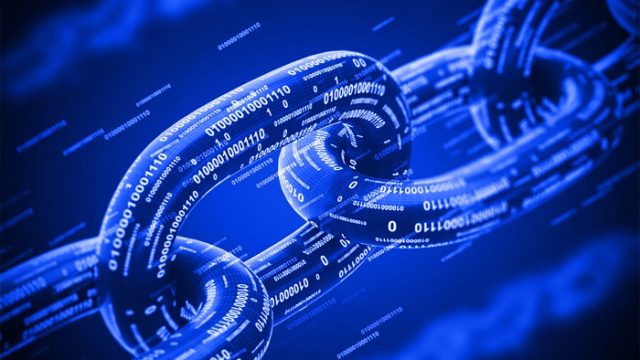
The role of blockchain technology in the transition to the circular economy

Blockchain technology can play a significant role in facilitating the transition towards a circular economy by enabling transparency, traceability and trust among participants in circular value chains.
The circular economy is an economic model that aims to minimize waste and maximize resource use by keeping materials in use as long as possible. This requires the creation of value chains with closed loops, where products and materials are reused, repaired or recycled, instead of being thrown away after the first use.
Blockchain technology can facilitate the creation of closed-loop value chains by enabling the tracking and verification of materials and products throughout their lifecycle. A blockchain-based system can, for example, track the origin, quality and quantity of raw materials, as well as the production process, transport and disposal or recycling at end-of-life.
Blockchain technology can play a crucial role in driving the circular economy by enabling transparency, traceability and accountability throughout the supply chain. The circular economy is a regenerative economic system that aims to keep resources in use as long as possible by minimizing waste, reducing consumption and reusing materials.
Here are some ways blockchain can support the circular economy:
– Transparency in the supply chain
Blockchain can provide a transparent and secure way to track the movement of products and materials throughout the supply chain. This can help to ensure that materials are ethically sourced, and that the products are made using sustainable practices.
– Product traceability
By using blockchain, companies can track the entire life cycle of a product, from production to disposal. This can help identify areas where waste can be reduced and can also help consumers make informed decisions about the products they buy.
– Asset tracking
Blockchain can be used to track the ownership and location of assets, such as industrial equipment, throughout their lifecycle. This can help ensure that assets are fully utilized and that they are not discarded prematurely.
– Smart contracts
Smart contracts can be used to automate transactions in the circular economy. For example, a smart contract can be used to automatically trigger the sale of used materials to a recycling company when a certain threshold is reached.
– Tokenization
Blockchain can enable the tokenization of assets, such as carbon credits or renewable energy certificates. This could create a new marketplace for these assets, making it easier for companies to buy and sell them, and help encourage sustainable practices.
This level of transparency and traceability can increase trust among participants in the value chain, as it ensures that everyone has access to the same information about the materials and products used.
This in turn can help reduce the risk of fraud, counterfeiting or other forms of malpractice that could undermine the integrity of the circular economy.
In addition, blockchain technology can facilitate the exchange of value between participants in the value chain, for example through smart contracts that automatically execute transactions based on predefined conditions. This can help to make the flow of materials and products more efficient, as well as enable new business models that stimulate the reuse and recycling of resources.
Summary:
In fact, Industry 4.0 technologies such as the Internet of Things (IoT), artificial intelligence (AI) and blockchain can play an important role in enabling a circular economy. Blockchain can help ensure transparency and traceability of materials and transactions, enabling more efficient and secure reuse and recycling of assets.
By utilizing modern technologies, companies can create new circular business models that prioritize resource efficiency, waste reduction and material recycling. They can also improve collaboration and communication across various stakeholders in the circular economy, including suppliers, manufacturers, distributors and customers.
However, implementing these technologies alone will not be enough to achieve a circular economy. It requires a fundamental shift in the way we design, produce, consume and dispose of goods and services. It requires a systemic change that involves all stakeholders, including businesses, governments and consumers.
Therefore, imagination and creativity play a crucial role in developing innovative solutions that promote a circular economy. We need to think outside the box and explore new ways of doing things that prioritize sustainability, resource efficiency and waste reduction. We must also work together to create a shared vision and roadmap for a circular economy that guides our collective efforts and actions.
The views of the author are personal and do not necessarily represent the views of the site.
 Mr Nikhil Goyal is the Founder and CEO, Beyond Imagination Technologies. A seasoned entrepreneur and technology enthusiast, Goyal has worked on several important projects throughout his professional journey, including manufacturing projects in Bhutan, before starting his blockchain venture under the banner Beyond Imagination. His fascination with blockchain technology and passion for harnessing its infinite possibilities have been at the center of his work ethic at Beyond Imagination. He founded Beyond Imagination to solve real-world problems with exciting and creative solutions.
Mr Nikhil Goyal is the Founder and CEO, Beyond Imagination Technologies. A seasoned entrepreneur and technology enthusiast, Goyal has worked on several important projects throughout his professional journey, including manufacturing projects in Bhutan, before starting his blockchain venture under the banner Beyond Imagination. His fascination with blockchain technology and passion for harnessing its infinite possibilities have been at the center of his work ethic at Beyond Imagination. He founded Beyond Imagination to solve real-world problems with exciting and creative solutions.


